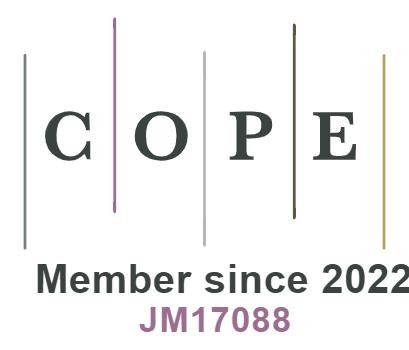REFERENCES
1. NASA/Deloitte Consulting LLP. UAM Vision Concept of Operations (ConOps) UAM Maturity Level (UML) 4. NASA; 2021. Available from: https://www.nasa.gov/aeroresearch/uam-vision-conops-uml-4[Last accessed on 23 Mar 2022].
2. Johnson W, Silva C. NASA concept vehicles and the engineering of advanced air mobility aircraft. Aeronaut J 2022;126:59-91.
3. Ellis KK, Krois P, Koelling JH, Prinzel LJ, Davies MD, Mah RW. Defining services, functions, and capabilities for an Advanced Air Mobility (AAM) In-time Aviation Safety Management System (IASMS). AIAA Aviation 2021 Forum: Proceedings of the AIAA Aviation 2021 Forum; 2021; pp. 2396.
4. Desai K, Al Haddad C, Antoniou C. Roadmap to early implementation of passenger air mobility: findings from a delphi study. Sustainability 2021;13:10612.
5. Warren M, Garbo A, Herniczek MTK, Hamilton T, German B. Effects of range requirements and battery technology on electric VTOL sizing and operational performance. AIAA Scitech 2019 Forum: Proceedings of the AIAA Scitech 2019 Forum; 2019; pp. 0527.
6. Li X, Yuan C, Wang Z. Multi-time-scale framework for prognostic health condition of lithium battery using modified Gaussian process regression and nonlinear regression. J Power Sources 2020;467:228358.
7. Wang S, Fernandez C, Yu C, Fan Y, Cao W, et al. A novel charged state prediction method of the lithium ion battery packs based on the composite equivalent modeling and improved splice Kalman filtering algorithm. J Power Sources 2020;471:228450.
8. How DNT, Hannan MA, Hossain Lipu MS, Ker PJ. State of charge estimation for lithium-ion batteries using model-based and data-driven methods: a review. IEEE Access 2019;7:136116-36.
9. Feng Y, Xue C, Han QL, Han F, Du J. Robust Estimation for State-of-Charge and State-of-Health of Lithium-Ion Batteries Using Integral-Type Terminal Sliding-Mode Observers. IEEE T Ind Electron 2020;67:4013-23.
10. Saha B, Goebel K, Poll S, Christophersen J. Prognostics methods for battery health monitoring using a bayesian framework. IEEE T Instrum Meas 2009;58:291-96.
11. Goebel K, Saha B, Saxena A, Celaya JR, Christophersen JP. Prognostics in battery health management. IEEE Instru Meas Mag 2008;11:33-40.
12. Mo B, Yu J, Tang D, Liu H, Yu J. A remaining useful life prediction approach for lithium-ion batteries using Kalman filter and an improved particle filter. 2016 IEEE International Conference on Prognostics and Health Management (ICPHM): Proceedings of the 2016 IEEE International Conference on Prognostics and Health Management; 2016. pp. 1-5.
13. Martin JA, Ouwerkerk JN, Lamping AP, Cohen K. Relevance vector machine and particle filter for unmanned aerial vehicle battery prognostics. AIAA Scitech 2021 Forum: Proceedings of the AIAA Scitech 2021 Forum; 2021.
14. Widodo A, Shim MC, Caesarendra W, Yang BS. Intelligent prognostics for battery health monitoring based on sample entropy. Expert Syst Appl 2011;38:11763-69.
15. Song S, Wei Z, Xia H, Cen M, Cai C. State-of-charge (SOC) estimation using T-S fuzzy neural network for lithium iron phosphate battery. 2018 26th International Conference on Systems Engineering (ICSEng): Proceedings of the 2018 26th International Conference on Systems Engineering; 2018; pp. 1-5.
16. Ananto P, Syabani F, Indra WD, Wahyunggoro O, Cahyadi AI. The state of health of Li-Po batteries based on the battery's parameters and a fuzzy logic system. 2013 Joint International Conference on Rural Information Communication Technology and Electric-Vehicle Technology (rICT ICeV-T): Proceedings of the 2013 Joint International Conference on Rural Information Communication Technology and Electric-Vehicle Technology; 2013. pp. 1-4.
17. Pan W, Chen Q, Zhu M, Tang JL, Wang J. A data-driven fuzzy information granulation approach for battery state of health forecasting. J Power Sources 2020;475:228716.
18. Khamar M, Askari J. A charging method for Lithium-ion battery using Min-max optimal control. 2014 22nd Iranian Conference on Electrical Engineering (ICEE): Proceedings of the 2014 22nd Iranian Conference on Electrical Engineering; 2014; pp. 1239-43.
19. Rashid A, Hofman T, Rosca B. Enhanced battery thermal management systems with optimal charge control for electric vehicles. 2018 Annual American Control Conference (ACC): Proceedings of the 2018 Annual American Control Conference; 2018; pp. 1849-54.
20. Rosewater DM, Copp DA, Nguyen TA, Byrne RH, Santoso S. Battery energy storage models for optimal control. IEEE Access 2019;7:178357-91.
21. Wu D, Balducci PJ, Crawford AJ, Viswanathan VV, Kintner-Meyer MC. Optimal control for battery storage using nonlinear models; 2018, 1. Available from: https://www.osti.gov/biblio/1647339[Last accessed on 23 Mar 2022].
22. Patil MA, Tagade P, Hariharan KS, Kolake SM, Song T, et al. A novel multistage Support Vector Machine based approach for Li ion battery remaining useful life estimation. Appl Energ 2015;159:285-97.
23. Wei J, Dong G, Chen Z. Remaining useful life prediction and state of health diagnosis for lithium-ion batteries using particle filter and support vector regression. IEEE T Ind Electron 2018;65:5634-43.
24. Sui X, He S, Stroe DI, Teodorescu R. State of Health estimation for lithium-ion battery using fuzzy entropy and support vector machine. 2020 IEEE 9th International Power Electronics and Motion Control Conference (IPEMC2020-ECCE Asia): Proceedings of the 2020 IEEE 9th International Power Electronics and Motion Control Conference; 2020; pp. 1417-22.
25. Vatani M, Szerepko M, Preben Vie JS. State of health prediction of Li-ion batteries using incremental capacity analysis and support vector regression. 2019 IEEE Milan PowerTech: Proceedings of the 2019 IEEE Milan PowerTech conference; 2019; pp. 1-6.
26. Li L, Cui W, Hu X, Chen Z. A state-of-health estimation method of lithium-ion batteries using ICA and SVM. 2021 Global Reliability and Prognostics and Health Management (PHM-Nanjing): Proceedings of the 2021 Global Reliability and Prognostics and Health Management conference; 2021; pp. 1-5.
28. Karal O. Maximum likelihood optimal and robust Support Vector Regression with lncosh loss function. Neural Networks 2017;94:1-12.
29. Smola AJ, Schölkopf B, Müller KR. General cost functions for support vector regression. 8th International Conference on Artificial Neural Networks: Proceedings of the 8th International Conference on Artificial Neural Networks; 1998; pp. 79-83. Available from: http://citeseerx.ist.psu.edu/viewdoc/summary?doi=10.1.1.41.2760[Last accessed on 23 Mar 2022].
30. Awad M, Khanna R. Efficient learning machines: theories, concepts, and applications for engineers and system designers. In: Support Vector Regression. Berkeley, CA: Apress; 2015. pp. 67-80.
31. Schölkopf B, Smola AJ. Learning with kernels: support vector machines, regularization, optimization, and beyond. Boston, MA: The MIT Press; 2018.
32. Tipping M. Advances in Neural Information Processing Systems. vol. 12. In: Solla S, Leen T, Müller K, editors. The Relevance Vector Machine. Boston, MA: The MIT Press; 2000. pp. 652-58. Available from: https://proceedings.neurips.cc/paper/1999/file/f3144cefe89a60d6a1afaf7859c5076b-Paper.pdf [Last accessed on 23 Mar 2022].
33. Tipping ME. Sparse bayesian learning and the relevance vector machine. J Mach Learn Res 2001 9;1: 211-44.
34. Fletcher T. Relevance Vector Machines Explained. London's Global University 2010, 10. Available from: https://static1.squarespace.com/static/58851af9ebbd1a30e98fb283/t/58902f4a6b8f5ba2ed9d3bfe/1485844299331/RVM+Explained.pdf[Last accessed on 23 Mar 2022].
37. Fernández A, Herrera F, Cordón O, José del Jesús M, Marcelloni F. Evolutionary fuzzy systems for explainable artificial intelligence: why, when, what for, and where to? IEEE Comput Intell M 2019;14:69-81.
38. Saraf AP, Chan K, Popish M, Browder J, Schade J. Explainable artificial intelligence for aviation safety applications. AIAA Aviation 2020 Forum: Proceedings of the AIAA Aviation 2020 Forum; 2020.
39. Leekwijck WV, Kerre EE. Defuzzification: criteria and classification. Fuzzy Set Syst 1999;108:159-78.
40. Runkler TA. Selection of appropriate defuzzification methods using application specific properties. IEEE T Fuzzy Syst 1997;5:72-79.
41. NASA Ames Research Center. Li-ion Battery Aging Datasets; 2010. Available from: https://c3.ndc.nasa.gov/dashlink/resources/133[Last accessed on 23 Mar 2022].
42. Cherkassky V, Ma Y. Practical selection of SVM parameters and noise estimation for SVM regression. Neural Networks 2004;17:113-26.
43. Mirjalili S. Evolutionary algorithms and neural networks. New York City, NY: Springer International Publishing; 2019; pp. 43-55.
44. Buckley JJ, Hayashi Y. Fuzzy genetic algorithm and applications. Fuzzy Set Syst 1994;61:129-36.
45. Cordón O, Herrera F, Hoffmann F, Magdalena L. Genetic Fuzzy Systems. Singapore: World Scientific; 2001.
46. Lamping AP, Ouwerkerk JN, Cohen K. Multi-UAV Control and Supervision with ROS. 2018 Aviation technology, integration, and operations conference: Proceedings of the 2018 Aviation technology, integration, and operations conference; 2018. p. 4245.
47. Grefenstette JJ. Optimization of Control Parameters for Genetic Algorithms. IEEE T Syst Man Cyb 1986;16:122-28.
48. Schaffer JD, Caruana RA, Eshelman LJ, Das R. A Study of Control Parameters Affecting Online Performance of Genetic Algorithms for Function Optimization. Third International Conference on Genetic Algorithms: Proceedings of the Third International Conference on Genetic Algorithms. San Francisco, CA, USA: Morgan Kaufmann Publishers Inc.; 1989. pp. 51-60.







